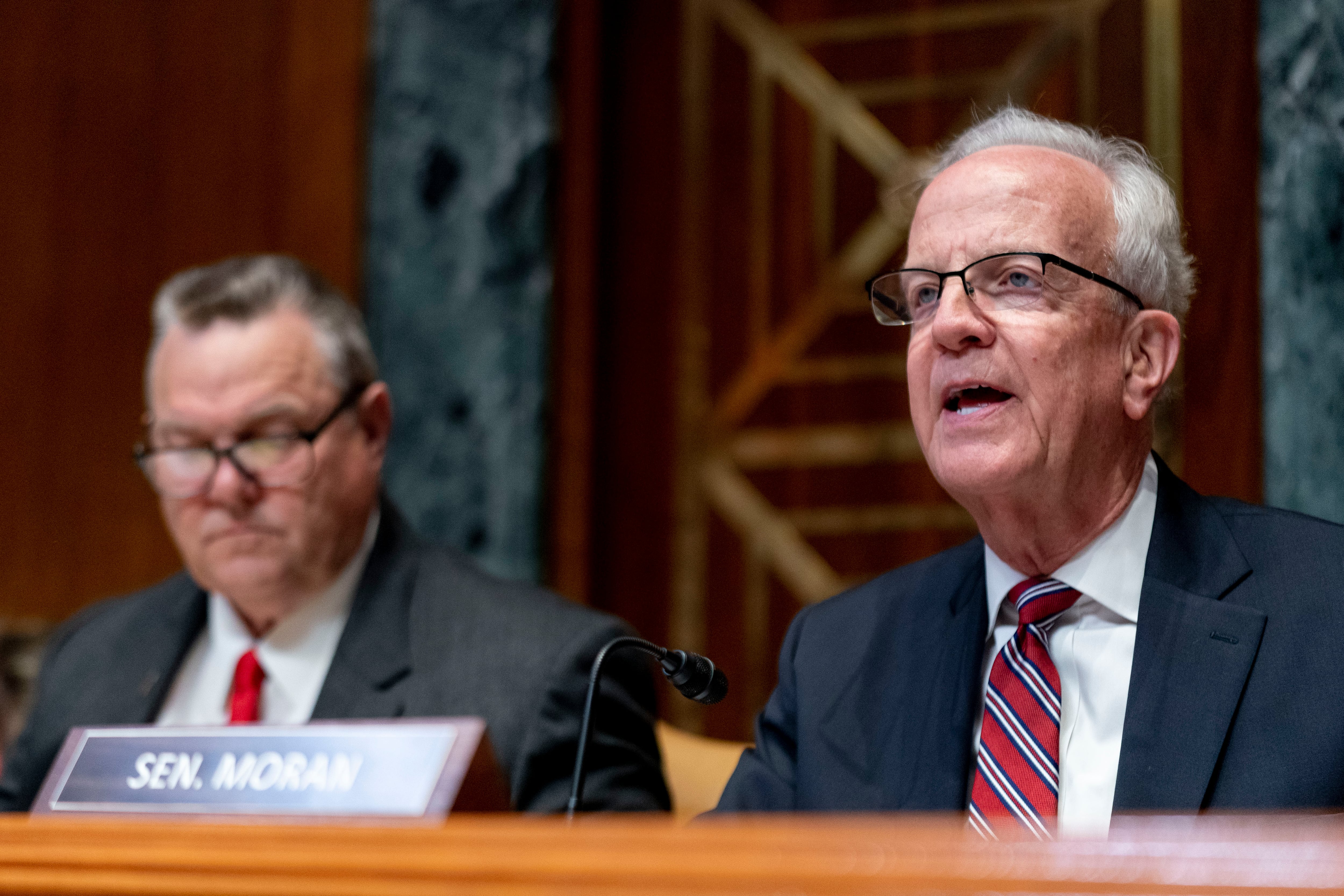WASHINGTON — A U.S. airstrike on a building in the village of Jineh, in Aleppo province, Syria, killed dozens al-Qaida regional leaders and militants and resulted in one civilian casualty, according to Army Brig. Gen Paul Bontrager, deputy director for operations at U.S. Central Command and lead investigator into the March 16 incident. Human rights groups have claimed the airstrike killed dozens of civilians.
The Syrian Observatory for Human Rights, a U.K.-based monitoring group, claimed the U.S. military struck a mosque, killing nearly 46 civilians, according to the BBC.
U.S. military officials, however, have said that intelligence reports gathered before the strike showed it was not a mosque but a meeting place for al-Qaida militants. The strike was carried out by U.S. F-15s and an armed MQ-9 drone operating under a U.S. Special Operations task force.
The formal investigation "found zero credible evidence" to suggest intelligence reports were wrong, Bontrager told reporters Wednesday.
"We know with certainty that this was an al-Qaida meeting with regional al-Qaida leaders present," he said.
According to the investigation, intelligence assets reported March 14 that a meeting would be taking place between al-Qaida and Syrian militants and al-Qaida leaders in Jineh. The next day, additional intelligence reinforced that a meeting would be taking place in the not-too-distant future. By the afternoon of March 16, "intelligence, surveillance and reconnaissance assets confirmed reports of a meeting forming in a specific building where intelligence had pointed to previously," Bontrager said.
Once the meeting and location were confirmed, the dynamic targeting process began, he said. The strike cell began working immediately with the target engagement authority — the entity authorized to approve the strike. The strike cell quickly determined the target was a valid military target and could be struck proportionately while minimizing collateral damage, Bontrager said.
The building was struck with 10 bombs from an Air Force F-15 while two missiles from an armed MQ-9 drone hit a target that was emerging from the compound.
The airstrike killed two dozen al-Qaida militants and caused minor damage to adjacent buildings. Furthermore, the compound struck by coalition aircraft was not a mosque, but may have been a madrassa under construction, according to Bontrager.
The investigation assessed that there was at least one male civilian casualty. Surveillance of the compound saw a "smaller statured person" entering the compound with an adult, Bontrager said. But, it is not known if this was a child, only that the person was at a minimum wounded in the airstrike.
The Omar Al-Kitab Mosque was not struck by coalition forces as reported by some human rights groups. The mosque is located to the left of the building that was hit by U.S. aircraft. Moreover, the larger compound directly to the right of the targeted building, which was also still under construction, is believed to be used for prayer, according to investigators. 
Bontrager concedes there was an overall "failure to identify the religious purposes of the buildings."
Staff manning errors and the poor turnover of information from one shift to the next in the strike cell contributed to the mosque being left off the no-strike list. A no-strike list usually contains buildings that have protected status under the Geneva Convention and are usually culturally or religiously significant buildings or medical facilities. The strike cell "could have done a better job of passing information from one individual to the next," he said.
People in the cell knew the location of the mosque, and it should have been on the no-strike list, according to Bontrager.
Either way, the mosque was never the intended target of the U.S. airstrike, Bontrager argues, and being on a no-strike list doesn’t mean a building can’t be struck, it just means it requires a higher approval authority, he explained. If a religious building is being used for military purposes it can still be targeted with the right approval process.
The process leading to the strike "didn’t meet our best standards," Bontrager said. But "no negligence was found at any point" in the investigation, and ultimately, "we struck out intended target," he said.
Bontrager submitted several recommendations to improve the targeting process, to include ensuring that all religious structures — including buildings under construction — be added to the no-strike list. Bontrager also recommends that there be a better balance of experts in the targeting cell and that the watch floor should have a more argumentative environment to ensure people are thinking more critically about the tasks at hand.
The investigation did not have access to the site of the bombing but was able to interview dozens of people in the strike cell, intelligence experts, combed through all video feeds and intelligence reports, and talked to Human Rights Watch. We left "no stone unturned," Bontrager said.
The goal of the investigation is transparency but also to make continuous improvements to ensure civilian casualties are minimized, a defense official said on condition of anonymity. "We hold ourselves to the highest standards, "he added.
Shawn Snow is the senior reporter for Marine Corps Times and a Marine Corps veteran.





